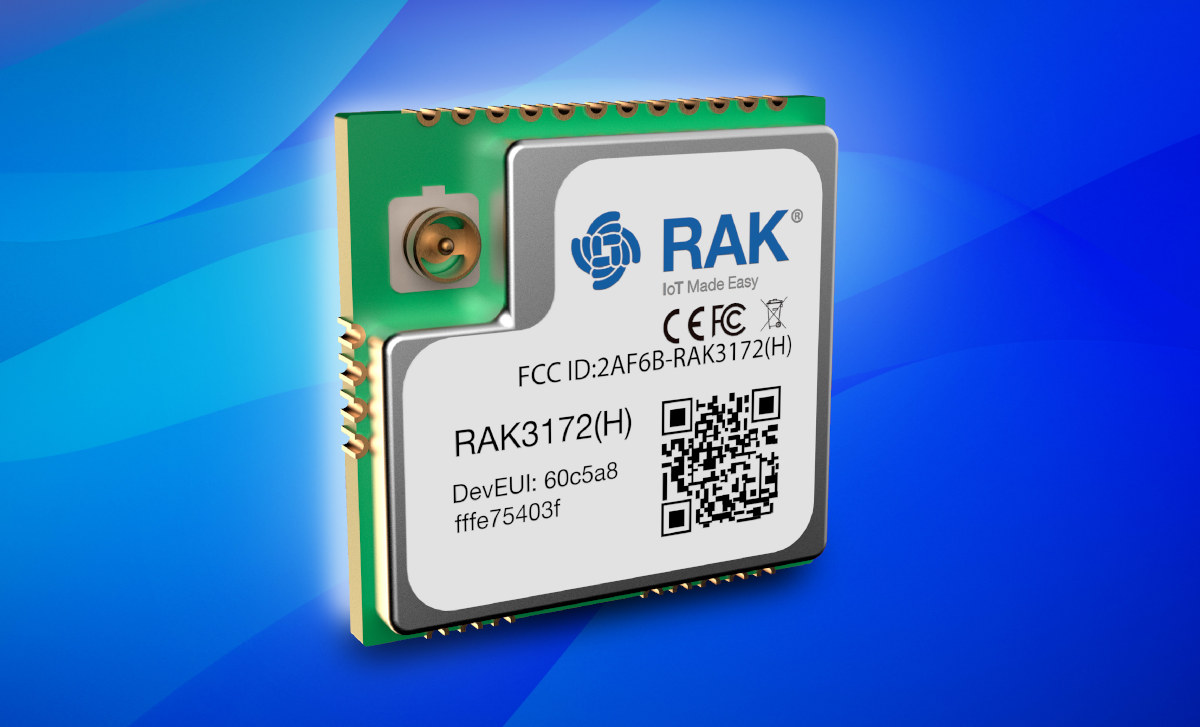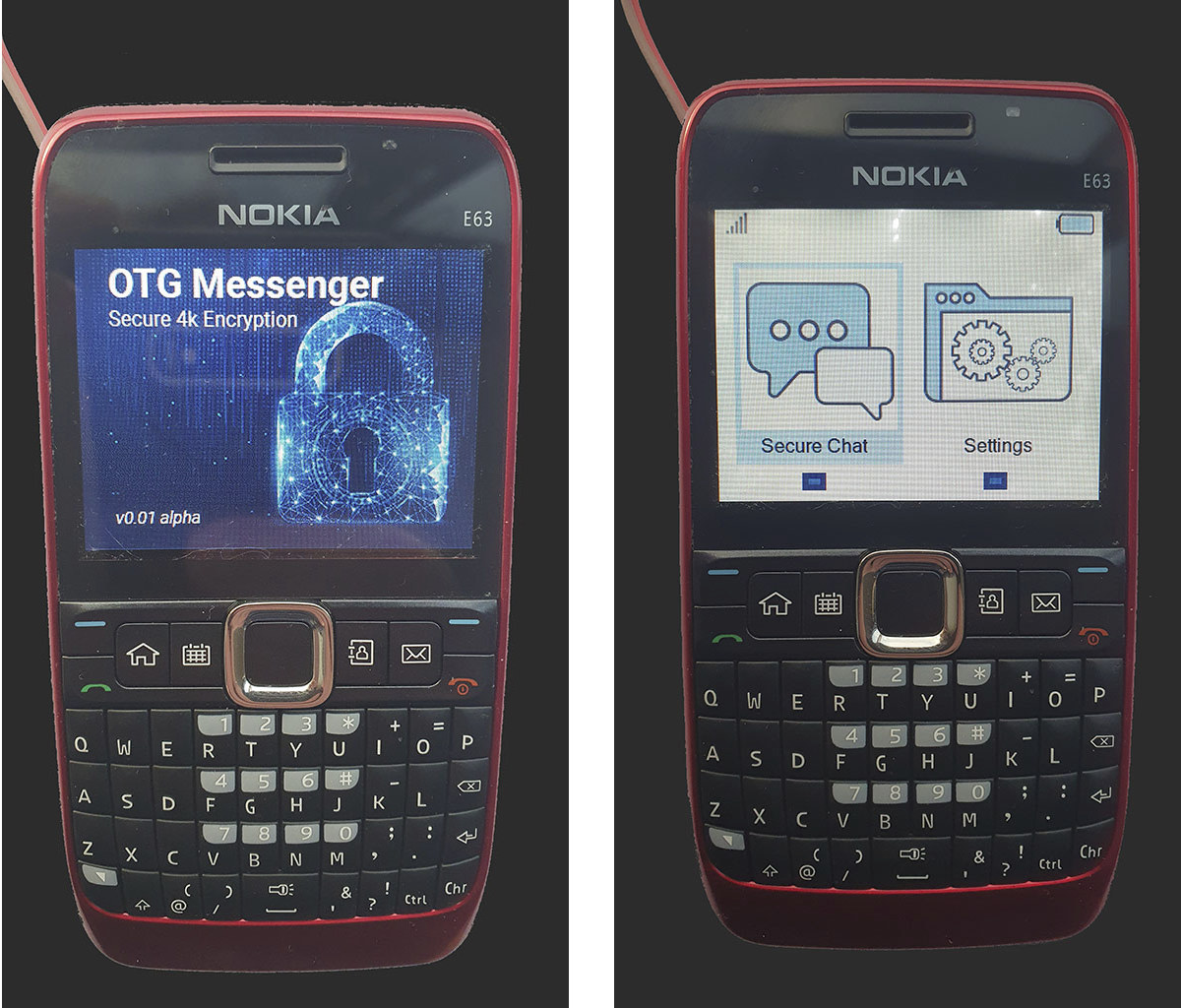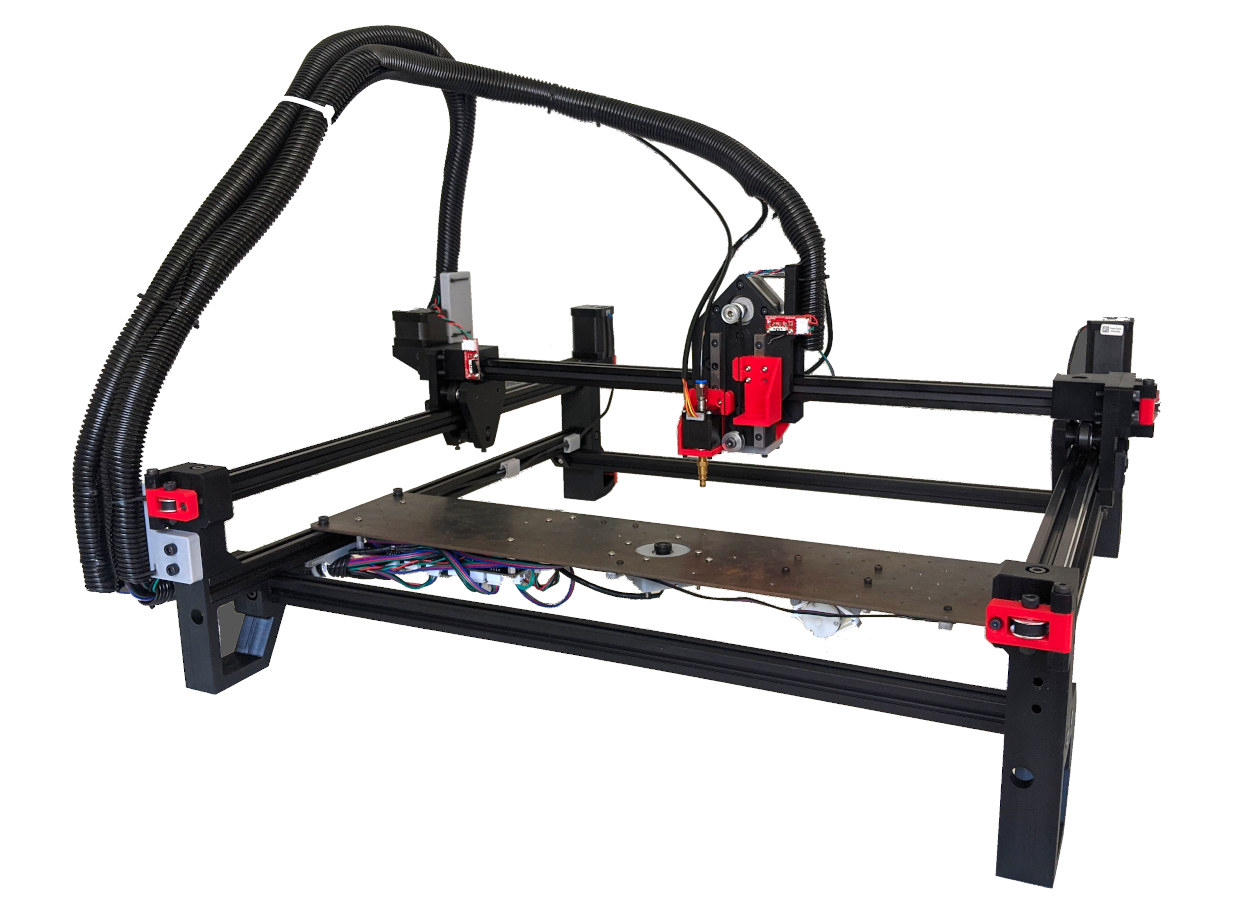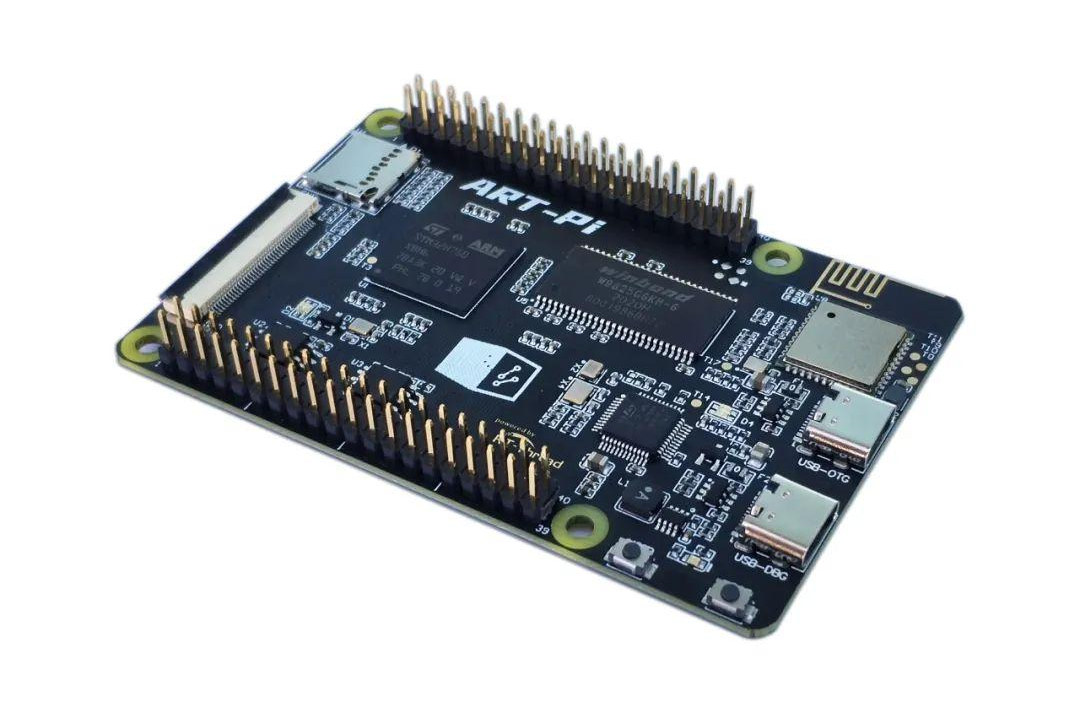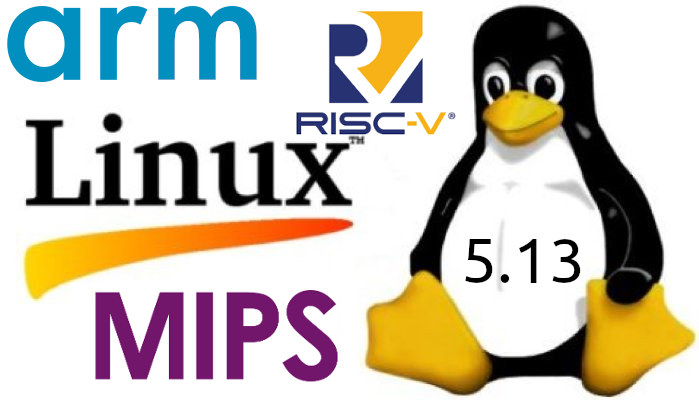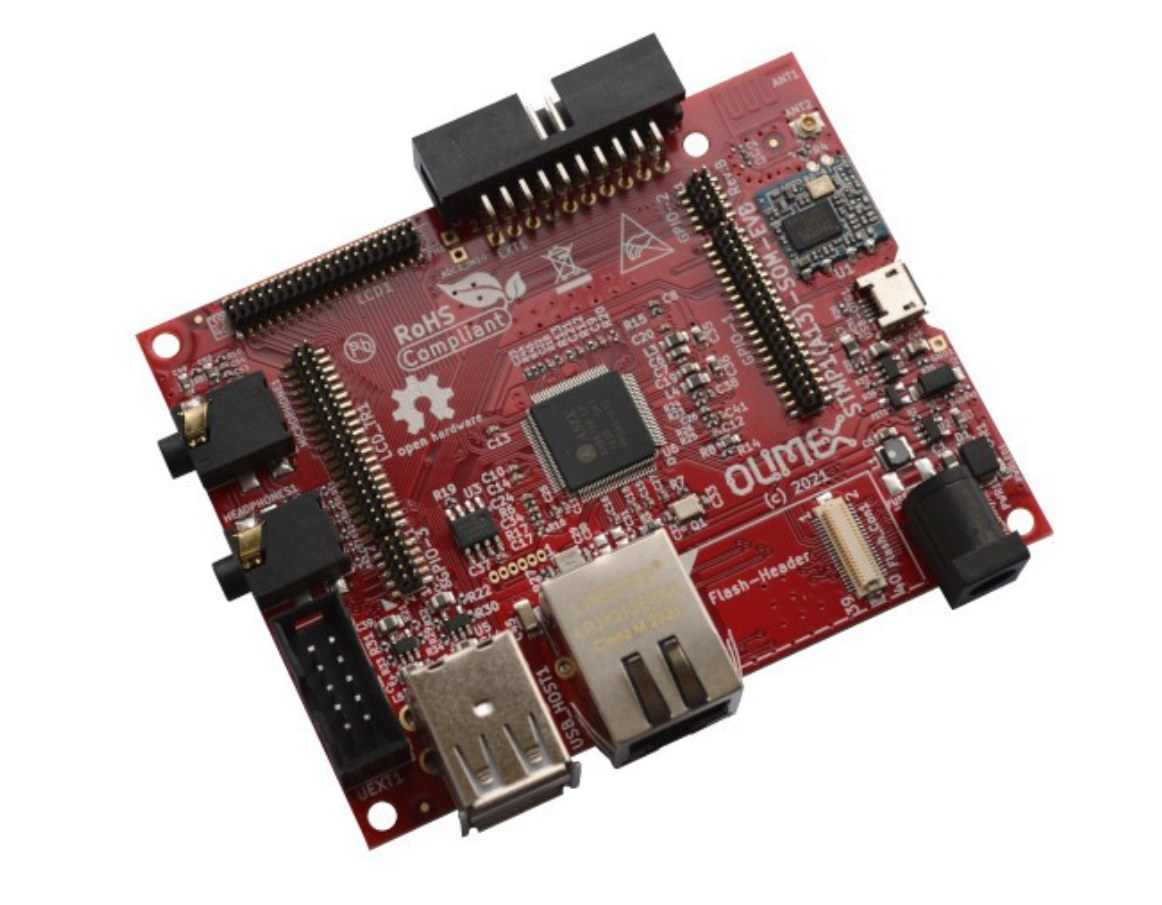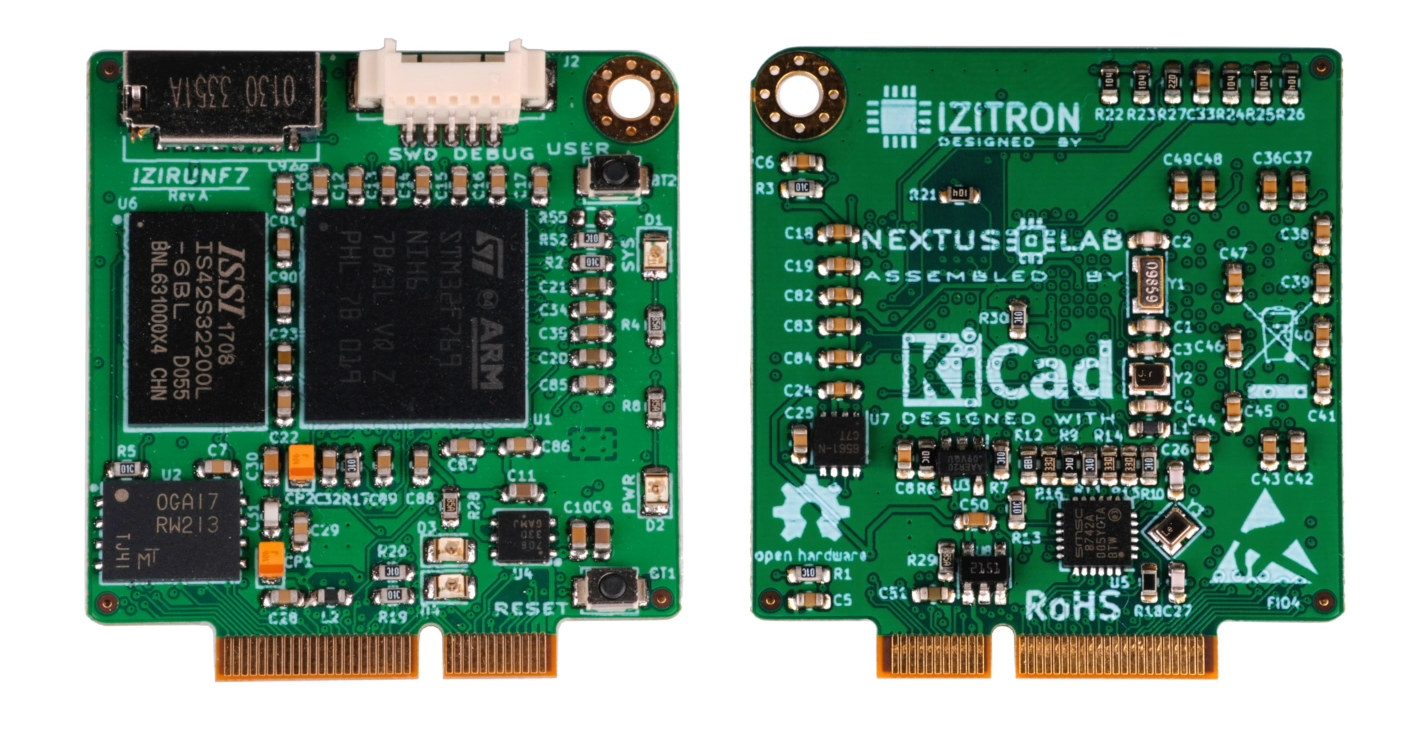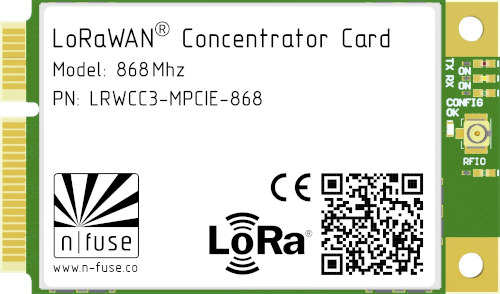RAK3172 WisDuo is a LoRaWAN module smaller than most coins with 15.5×15 mm dimensions made possible thanks to STMicro STM32WL Cortex-M4 LoRa SoC, which we previously found in Seeed Studio’s $10 LoRa-E5 module and corresponding development boards. But while Seeed Studio relies on STM32WLE5JC SoC with 256KB flash and 64KB RAM in a 73-pin UFBGA package, RAKwireless RAK3172 Wisduo is powered by STM32WLE5CC with the same amount of memory or storage, but in a 48-pin UFQFPN package, and an even lower price at just $5.99 in single units. RAK3172 Wisduo specifications: SoC – STMicro STM32WLE5CC55 Arm Cortex‐M4 MCU @ 48 MHz with 256 KB flash memory with ECC, 64 KB RAM, and a sub-GHz radio based on Semtech SX126x LoRaWAN 1.0.3 specification compliant Supported bands – EU433, CN470, IN865, EU868, AU915, US915, KR920, RU864, and AS923 LoRaWAN Activation by OTAA/ABP LoRa Point to Point (P2P) communication Range – Greater than […]
Nokia E63 phone converted into LoRa messenger for secure, off-the-grid communication
While LoRa radios are mostly designed to transmit data from sensors and to actuators, there have been attempts to leverage LoRa for messaging in the past with, for instance, the Meshtastic Mesh Networking Project to help hikers exchanged their GPS coordinates or other short messages, the Raspberry Pi Pico powered PICOmputer with QWERTY keyboard, display, and a LoRa module, and Pine64 is also working on developing LoRa hardware for messaging. Trevor Attema decided to repurpose his Nokia E63 Blackberry-like phone with a custom STM32H7 board with a LoRa radio while keeping the enclosure, display, backlighting, keyboard, and speaker which he calls the Off The Grid Messenger, or OTG Messenger for shorts. The custom board also adds Microchip ATECC608 crypto authentication chip for encrypted messages, and the LoRa Messenger would allow a theoretical transmission range of 16 kilometers in line of sight which would allow a small group of people to […]
Index PnP – An open-source pick-and-place machine for mid-scale manufacturing
We’ve previously written about one open-source pick-and-place machine, SimplePNP aiming to provide a low-cost solution for several hundred dollars and relying on OpenPnP open-source control software. But Stephen Hawes found out this type of solution did not cut it for mid-scale manufacturing (100 to 5000 units per year), so he decided to build his own. Meet Index PnP, an open-source pick-and-place machine designed for mass-production volumes typical of crowdfunding projects. The project was introduced launched with the following requirements Automated – no human interaction necessary from attaching the paste-applied board to the machine to having a board ready for reflow Capable of picking and placing components down to 0603 passives Integrated up and down vision for fiducial scanning and on-nozzle component alignment Automatic nozzle tip changer to support a wide range of component sizes Frame and motherboard design capable of future upgrades Mechanical and Electrical support for conveyor belt module […]
Art-Pi STM32H750 Cortex-M7 board supports RT-Thread, mainline Linux
I like to browse Linux changelog to learning about new features in the kernel, but also new hardware that made it into mainline Linux, even if only preliminary or partial. And in the just-released Linux 5.13, one board that caught my eye was Art-Pi, powered by an STMicro STM32H750 Cortex-M7 microcontroller without MMU (memory management unit) that was initially designed for RT-Thread real-time operating system. Art-Pi specifications: MCU – STM32H750XBH6 Value Line Cortex-M7 microcontroller @ 400 MHz, with 128KB flash, 16KB D/I cache, 864 SRAM, 64KB+128KB TCM with ECC correction System Memory – 32MB SDRAM Storage – MicroSD card slot, 16 MB SPI flash, 8MB QSPI flash Display – FPC connector for RGB888 displays Connectivity – SDIO WiFi 4 and UART Bluetooth via Ampak AP6212 module USB – 1x USB OTG Type-C port Debugging – On-board ST-LINK/V2.1 via USB-C DBG port Expansion – 2x 40-pin P1 & P2 headers with […]
Linux 5.13 Release – Notable changes, Arm, MIPS and RISC-V architectures
Linus Torvalds has just announced the release of Linux 5.13: So we had quite the calm week since rc7, and I see no reason to delay 5.13. The shortlog for the week is tiny, with just 88 non-merge commits (and a few of those are just reverts). It’s a fairly random mix of fixes, and being so small I’d just suggest people scan the appended shortlog for what happened. Of course, if the last week was small and calm, 5.13 overall is actually fairly large. In fact, it’s one of the bigger 5.x releases, with over 16k commits (over 17k if you count merges), from over 2k developers. But it’s a “big all over” kind of thing, not something particular that stands out as particularly unusual. Some of the extra size might just be because 5.12 had that extra rc week. And with 5.13 out the door, that obviously means […]
Olimex STM32MP1 SoM and evaluation board support Linux 5.10
Olimex has just announced the availability of an STMicro STM32MP1 Cortex-A7/M4 powered system-on-module (SoM) and an evaluator board with respectively STMP15X-SOM available in extended and industrial temperature variants, as well as STMP1(A13)-EVB evaluation board that works with the new STM32MP1 module, as well as earlier A13-SOM Allwinner A13 based system-on-module. Beyond the hardware, the company told us their upcoming STMP1-OLinuXino-LIME2 SBC could support mainline Linux in February, and the company prepared some Linux 5.10 based Debian Buster and Ubuntu Focal images which are now also available for the STMP15X-SOM module. STMP15X-SOM system-on-module Specifications: SoC – STMicro STM32MP151/153/157 dual-core Cortex-A7 @ 650 to 800MHz and Arn Cortex-M4 real-time core @ 209 MHz System Memory – 256 or 512 MB DDR3L Storage – MicroSD card socket Audio – On-module audio codec Board-to-board connectors GPIO-1 40-pin connector with 39 GPIOs, 3x UARTs, 1x QuadSPI, 2x I2C, 2x eMMC GPIO-2 10-pin connector with USB […]
IZIRUN open-hardware STM32 development boards expose GPIOs through M.2 connector (Crowdfunding)
M.2 sockets are typically used to connect wireless or storage expansion boards to laptops, computers, and SBC’s. But nothing precludes them from being used for another purpose, and earlier this year we wrote about Sparkfun MicroMod MCU boards with an M.2 connector for GPIOs, I2C, SPI, etc… IZITRON has expanded the concept with three slightly larger (IZIRUN) STM32 boards routing more IOs to the M.2 connector, and additional features such as built-in EEPROM and buttons. IZIGOBOARD carrier board is then used to host the STM32F0, STM32F4, or STM32F7 board in order to ease development. IZIRUN STM32 development boards IZIRUN boards specifications: Microcontroller IZIRUNF0 – STMicro STM32F030CCT6 Cortex-M0 MCU @ 48 MHz with 256KB flash, 32 KB SRAM IZIRUNF4 – STMicro STM32F407VET6 Cortex-M4 MCU @ 168 MHz with 512KB flash, 192KB SRAM IZIRUNF7 – STMicro STM32F769NIH6 Cortex-M7 MCU @ 216 MHz with 2MB KB flash, 532KB SRAM On-board RAM – IZIRUNF7 […]
n-Fuse introduces SX1303 mPCIe LoRaWAN concentrator card
I first noticed Semtech SX1303 LoRa baseband processor for gateways was in RAKwireless WisGate Developer Base equipped with RAK5146 SX1303 mPCIe LoRaWAN concentrator card. But n-Fuse now offers another option with their LRWCC3-MPCIE mini PCIe card that is an update to their earlier SX1302 based n-Fuse LRWCC2-MPCIE card announced last year. n-Fuse LRWCC3-MPCIE specifications are very similar with the differences highlighted in bold: MCU – STMicro STM32 LoRa Connectivity Semtech SX1303 digital baseband processor with 2xSX1250 and 1xSX1261 Tx/Rx front-ends Frequency Range – 863 to 870 MHz or 915 to 928 MHz Sensitivity 868 Mhz <= -125dBm at SF7, BW 125KHz <= -140dBm at SF12, BW 125kHz 915 Mhz <= -125dBm at SF7, BW 125KHz <= -140dBm at SF12, BW 125kHz Max RF Output Power – Up to +27dBm Listen Before Talk prevents collisions while accessing the spectrum. Fine Time Stamping enables Time Difference of Arrival (TDOA) network-based geolocation. u.FL […]


